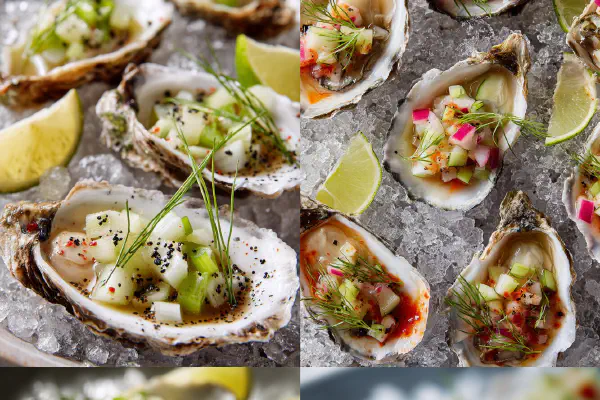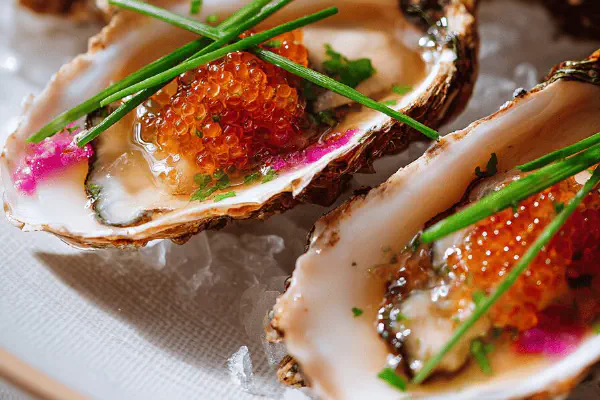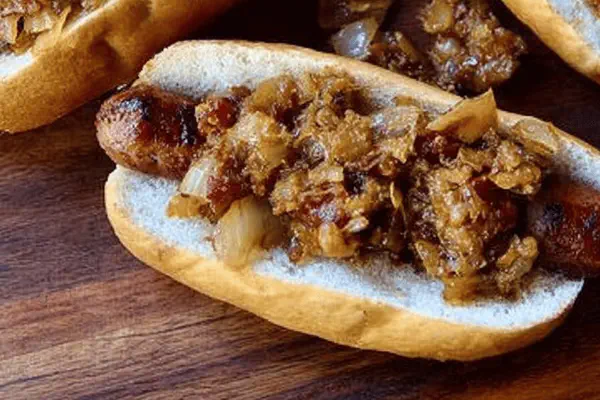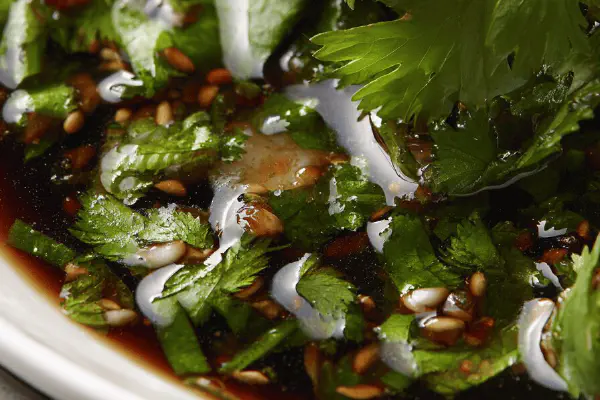Tropical Mignonette Twist
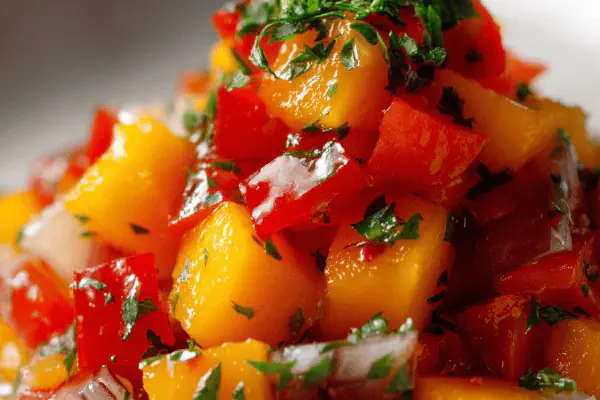
By Emma
Certified Culinary Professional
Ingredients
- 50 g (1/3 cup) fresh papaya cut into tiny dice
- 30 ml (2 tablesp) white wine vinegar
- 15 ml (1 tablesp) seeded red bell pepper diced fine
- 1 pinch freshly cracked black pepper
About the ingredients
Method
- Measure diced papaya and bell pepper small enough to release juices quickly but hold shape.
- Combine papaya, bell pepper, vinegar, and black pepper in a medium bowl.
- Stir briskly. Hear soft clink of bits hitting bowl—signals particle distribution.
- Let stand 10 to 12 minutes. Watch for fruit to soften slightly, vinegar to tone down harshness.
- Taste mid-wait. If vinegar too sharp, rest longer; if too mellow, add splash more vinegar.
- Transfer to airtight container. Chill. Use within 48 hours for best freshness and texture.
- Spoon onto oysters just before serving to avoid fruit breaking down too much.
Cooking tips
Chef's notes
- 💡 Dice papaya just right. Too big means slow juice release. Too small, mushy mess. I cut fine but firm tiny pieces—soft but hold shape. Bell pepper diced even finer for crunch but no breaks. Watch texture closely.
- 💡 White wine vinegar always cool and crisp. Avoid metal bowls—vinegar reacts, flavors dull or turn off. Glass or ceramic only. Keep all ingredients cold before mixing slows papaya softening, controls flavor punch. Timing matters; over- or under-macerate throws off bite.
- 💡 Listen as you stir. Small clinks mean good mixing, fruit touching bowl, releasing juice fast. Silence means dry bits or clumps. Stir briskly but don't mash. Keep everything light but combined evenly. Fruit texture signals readiness.
- 💡 Macerate 10 to 12 minutes max at room temp. Less than that and vinegar bites too hard. More means fruit mush, sauce clouds, freshness lost. Taste mid-way to gauge vinegar softness. Adjust with splash more vinegar, no overdoing unless you want sharp edges.
- 💡 Substitutions work but change mouthfeel and acidity. Sweet cherry tomatoes can replace bell pepper for color, less crunch. Rice or apple cider vinegar swap ok—modify quantity, acidity varies. Mango back in for sweeter, reduce vinegar to avoid overpower. Black pepper optional but adds bright bite, balances fruit sweetness.
Common questions
How to know when maceration is done?
Watch fruit soften slightly but not fall apart. Vinegar harshness mellows. Taste often. Clinking stops means juice released. Timing 10 to 12 minutes usual but watch fruit, room temp affects speed.
Can I use other fruits besides papaya?
Yes, mango works well but dice larger, reduce vinegar to avoid sweetness conflict. Pineapple risky—too acidic, breaks down fast. Cherry tomatoes good for color swap but less sweet, add different acidity. Keep fresh fruit only.
Why does the sauce get cloudy sometimes?
Over-maceration causes mushy fruit releasing pectin, cloudiness. Too much stirring or old fruit also culprits. Use fresh, chill after maceration, transfer quickly. Avoid metal bowls to keep sharp flavor intact.
How to store prepared sauce?
Airtight container best, chill immediately. Use within 48 hours max. Fruit softens if left longer, vinegar loses punch. Can prep small batches daily if needed. Avoid pre-mixing hours ahead unrefrigerated—fruit disintegrates, flavor dilutes.
